|
In the 90s, when you grew up in a small town like I did, your options for entertainment were limited: glue sniffing, teen prostitution, and the video store. By the time I was in sixth grade, some of my friends were already dabbling in cocaine. I could be found at the video store. The only legitimate video store in Lacolle (the one that wasn’t just a convenience store with some video shelves in the back) opened on Church Street in what had previously been a flower shop, right in the middle of town, across from the general store and the United Church. I remember the daughters of the general store owners making fun of other kids in elementary school. I also remember them being a lot more demure after their father came out as gay. These are only memories. They might be false. The general store then became a dollar store. Now the building sits empty after the dollar store moved down the street in what used to be a furniture store, one of the largest commercial spaces in town. Of course, the video store didn’t move; it just closed. The building it resided in is a bit of an architectural oddity, a Swiss-chalet-looking top half sitting on a stone bottom broken up by four round windows that give you the impression you’re looking through a fish bowl. I remember walking through the aisles, trying to pick which movie I wanted to get lost in over the weekend based on the jacket. I would often gravitate towards the back, where the horror movies were. When I entered my teens, I would rent movies I was obsessed with (The Mighty Ducks and Speed), play them on the TV and tape them on an audio cassette running through a radio a few feet away. Then I’d listen to the tapes over and over on my yellow Sony Walkman, picturing the movie in my head. I might have enjoyed that even more than watching the actual movies. I didn’t limit myself to blockbusters. Around the same time, I sent my mom to the store with a list of videos I wanted, which included Krzysztof Kieslowski’s Three Colors Trilogy. My mom came back empty-handed. The store owner told her that I was the only one in Lacolle who rented such movies. When you grew up as a queer kid in the country, you took your gay content where you could find it. I would tape as many daytime soap operas as I could and watch them when I would come back from school, buy Soap Opera Digest at the drugstore and cut out pictures of shirtless hunks (I once made a Days of Our Lives collage), and I rented White Squall at the video store. This was all before I came out, even to myself. The VHS tape of White Squall I own comes from that same store – might even be the exact tape I watched the first time – as evidenced by the sticker on it: “WHITE SQUALL ACTION AVENTURE ANGLAIS 0658102.” I recently had to explain to a younger friend of mine that, to rent a movie, you would take a plastic token held by Velcro under the box (red for English movies, black for French ones, to avoid confusion) and present it to the clerk who would go get the videocassette matching the number behind the counter. This was before they figured out a security system that would prevent people from stealing tapes. This system also allowed my teenage self to take tokens for movies that were rated 18+ and hand them over to my mom who would rent the movies for me, oblivious to their content. Given that I grew up on slashers because of her love of horror movies, it is possible that she wouldn’t have cared anyway. As I now read the text on the White Squall jacket, I realize that every sentence – synopsis, tagline, review blurbs – ends with an exclamation point, like in an Archie comic. “The Adventure Of A Lifetime Turns Into The Ultimate Challenge Of Survival!” “Hollywood favorite Jeff Bridges (Blown Away) stars in this thrilling high seas adventure!” “Spectacular!” –USA Today White Squall is not a gay movie, but it is highly homoerotic thanks to its premise: it is about a dozen male teenagers who spend their senior year of high school on a boat instead of on land. The mother of Scott Wolf’s character tells him that his father would have loved to able to do something like this. Who wouldn’t? It’s a teen fantasy. It’s the concept that Breaker High would capitalize on one year later, smartly avoiding the drama that ultimately weighs White Squall down. Having recently watched Dirty Dancing again, I now think of it in the same category as White Squall: slight period pieces that look more like the year they were made than the one they’re pretending to take place in. Dirty Dancing takes place in 1963, but its aesthetic is undeniably that of the year of its release, 1987. White Squall takes place in 1960-61, but it is most definitely from 1996. In the same category, I should maybe add the movie White Squall is most often accused of copying, Dead Poets Society, released in 1989, but pretending to be 1959. Like many such movies, the songs on the soundtrack help to signify and conjure up the time period desired. As a result, we get a lot of black musicians scoring the lives of white characters. The only black people who appear in White Squall are meant to be part of the exotic scenery of the port towns the students visit on their trip around the world. The soundtrack is otherwise; Eddie Cochran is the only white boy in a sea of black musicians: Fats Domino, Tommy McCook, Chubby Checker, and Baba Brooks. (The only contemporary song, Sting’s “Valparaiso”, plays over the end credits like an argument for nostalgia, but I am choosing to ignore it, as the producers of the soundtrack wisely did.) Black people are visually even more absent in Dirty Dancing, but are just as prominent on the soundtrack: The Ronettes, Maurice Williams & the Zodiacs, Merry Clayton, Mickey and Sylvia, and The Five Satins all make apparitions. In this category, we could also add Pleasantville (Robert & Johnny, Larry Williams, Billy Ward and The Dominoes, Etta James, and Miles Davis), which might be the most excusable example since the movie is literally about nostalgic whitewashing.* The absence that was actually enticing to my gay teenage self however was that of women. As critic Roger Ebert noted, in White Squall, “Women play a secondary role (in this case, limited to the transmission and healing of venereal disease).” What we are left with are men pretending to be 16-year-old boys. In reality, most of the actors were around 20 years old. Baby-faced Scott Wolf was 27. In order to pass for teenagers, there is not a single chest hair in sight, though it is possible the actors were already down with shaving before production. In the 90s, body hair wasn’t in. What many critics viewed as one of the film’s faults was specifically what my actual 16-year-old self enjoyed. “[… Director Ridley] Scott has manned his crew with muscular, bronzed young types with keen haircuts, who look as if they hang out in Calvin Klein ads. (When I was 15 or 16, most kids were scrawny and had pimples and cowlicks, and they didn't look a bit like movie stars)”, Ebert pointed out. Entertainment Weekly’s Lisa Schwarzbaum described the film as a rousing salute to “the goodness of young men [who] are allowed to ripen with their shirts off”. The first three quarters of White Squall indeed play like an advertisement for men’s fashion. The first time we see Ryan Phillippe, he is shirtless and glistening. In the 90s, it was in Phillippe’s contract that he needed to be shirtless in every onscreen appearance: The Secrets of Lake Success, I Know What You Did Last Summer, Homegrown, 54, Cruel Intentions. Only The Secrets of Lake Success and Homegrown managed to pass by me. The first thing the men boys do on their first full day on the Albatross is to take their morning shower by jumping into the ocean shirtless, except for Wolf, whose soaked white t-shirt clings to his chest. Bad boy Dean first refuses to jump in like everyone else to assert his individuality, but when First Mate Shay implies that he’s too chicken to jump, Dean climbs higher than anyone else and dives in slow motion because penis. It is no surprise that, later, he is the one flexing before a group of Dutch girls. When the crew pulls on ropes, they also do so shirtless in order to highlight their muscles at work. This environment proves too tantalizing for rich, repressed daddy’s boy Frank Beaumont, who aims a crossbow at a shirtless Shay. Later, he finally boils over and shoots a dolphin with the same crossbow. As Captain Christopher “Skipper” Sheldon, Jeff Bridges is in peak daddy form. “He’s strong, tough, and he won’t take no for an answer,” Wolf writes in his diary, “But he makes you want to please him.” The shirtless shot of Bridges that graces the soundtrack cover is false advertising; he is never actually seen with anything less than a white tank top throughout the movie. Sheldon walks around saying shit that’s meant to be so wise you’d momentarily lose control of your bladder, like “You can’t run from the wind, son.” (Get it? It’s a metaphor. You are the ship and the wind is hardship. Hard ship. Boners. It’s about boners.) Every time one of the boys needs to insult someone, they go straight for the gay. When they discover that Dean is cheating on tests, they corner him. “Where are you going?” Wolf asks him. “To take a piss,” replies Dean. “Oh, really?” inquires Phillippe. “Yeah, you want to come in and shake it for me?” Dean dares him. Later, when Dean is drunk, he slays with, “Look at these guys… They’re homos.” SNAP. When Todd starts peeing fire after having had sex in Grenada, we get to see his bare butt while he shows his flaming penis to the captain’s wife, Dr. Alice Sheldon (Caroline Goodall, unfortunately not related to Jane), though she pulls down his underwear in the next shot (oops, continuity!) to give him a shot of penicillin. After, one of the boys congratulates Todd on getting an STI: “Way to go, Valentino. I never even copped a feel in Grenada.” To which Todd replies, “Yeah, well, your sexual orientation is not my problem.” Apparently, in the 60s, men wanted to get STIs because it proved they weren’t “homos.” Of course, the line between homophobia and homosociality is so porous that, when the boys finally begin to bond, what would have been an insult just a few seconds earlier suddenly becomes a way of showing affection. When they offer to help Dean study, the bad boy asks why they would help him. “We got a hard on for you, pansy,” replies Phillippe, smiling coyly. White Squall is rated PG-13 for “some sexuality” and, unfortunately, “a traumatic shipwreck.” Though the movie received a lukewarm reception from critics, most agreed that it finally picks up in its last act, when the Albatross meets the titular white squall. Personally, that’s when I lose interest. From that point on, nobody has their shirt off and, even though they are soaked, the editing is too fast to allow you to appreciate it; not to mention that homoeroticism tends to be put on the back burner when people are fighting for their lives, even if it’s just a re-enactment. All the drama only makes me wish I could go back to the fantasies of beginnings, to the high school on a boat, the VHS jacket on the shelf, the possibility of escapism. But it’s all nostalgic whitewashing. The Albatross lies at the bottom of the ocean, the video store is closed, and movies rarely work their magic on the jaded adult I’ve become. There is nothing on the other side of the round window. The empty fish bowl speaks: somewhere there is a dead fish. *See Krin Gabbard’s Black Magic: White Hollywood and African American Culture.
0 Comments
|
Sylvain Verstricht
has an MA in Film Studies and works in contemporary dance. His fiction has appeared in Headlight Anthology, Cactus Heart, and Birkensnake. Archives
April 2020
Categories
All
|
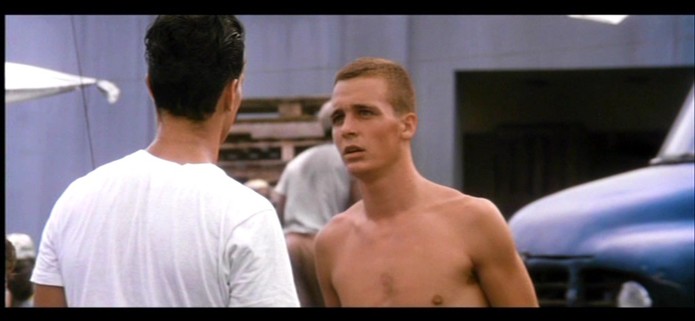
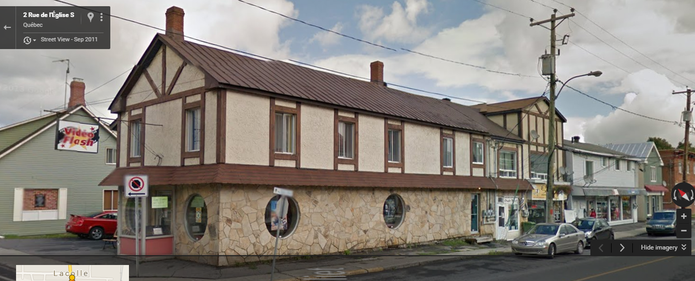
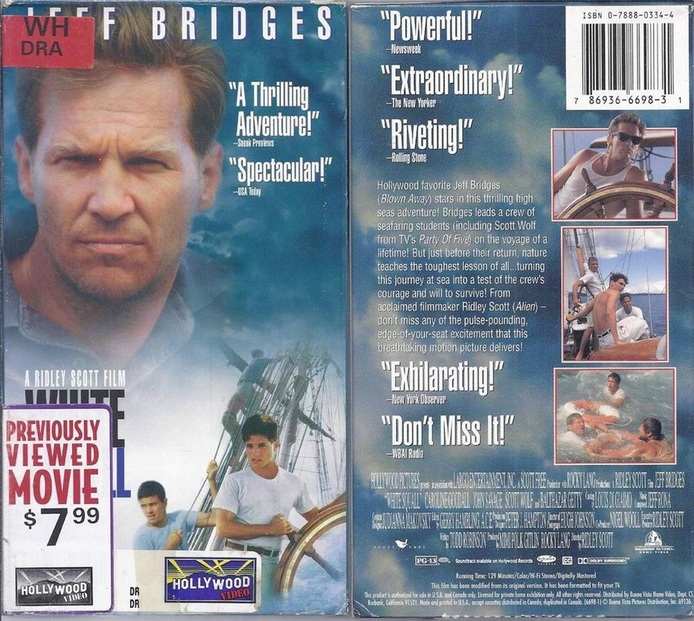
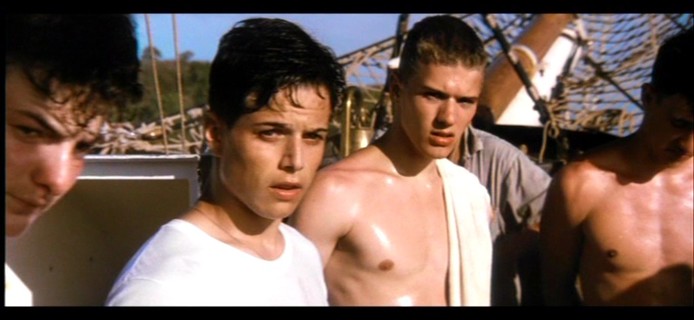
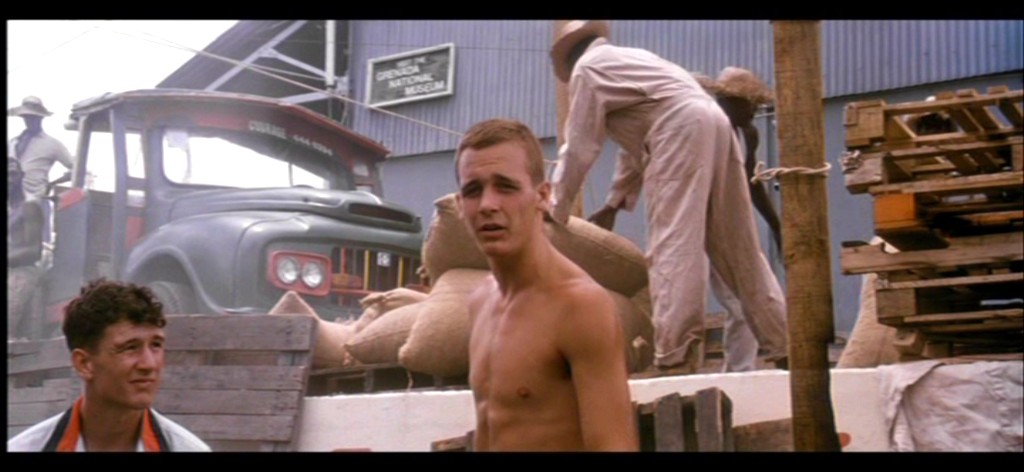
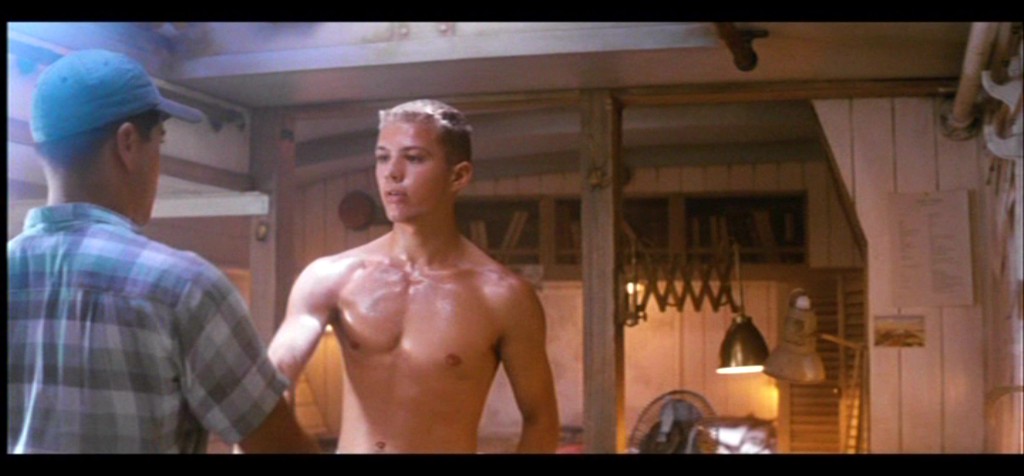
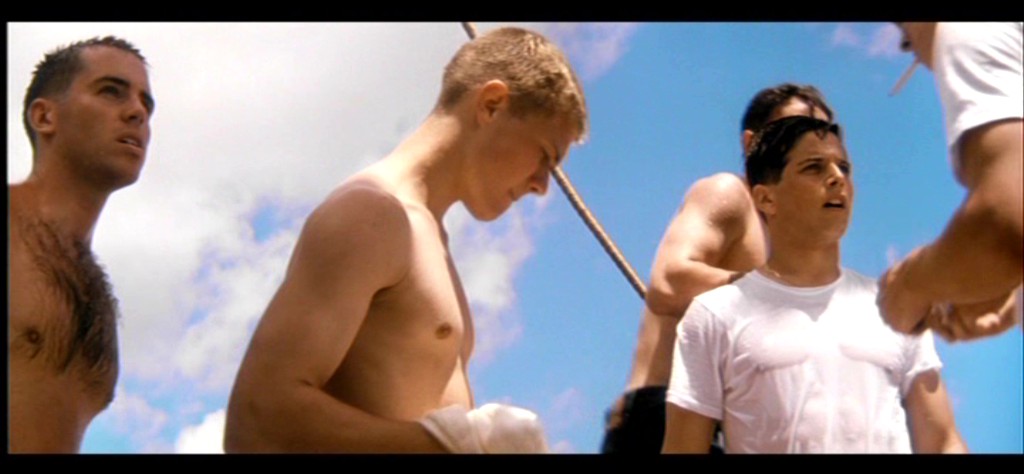
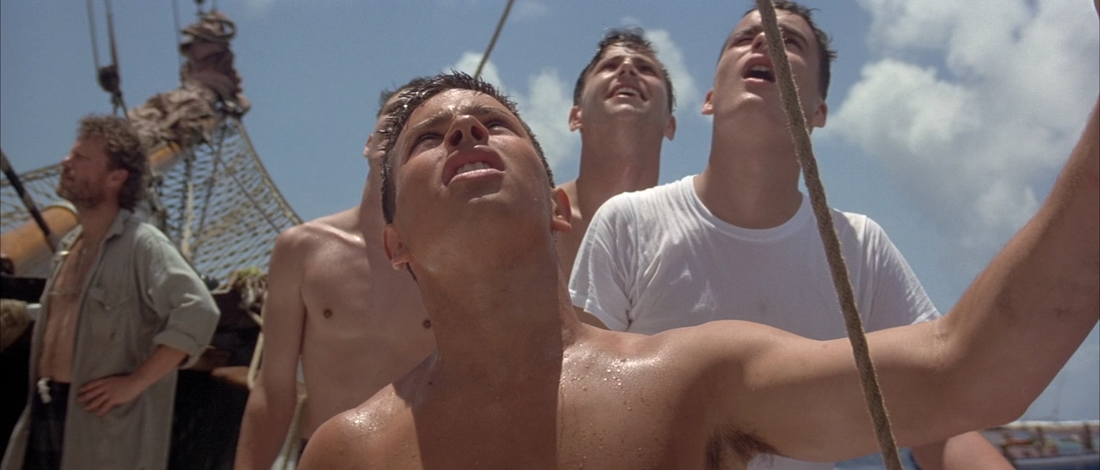
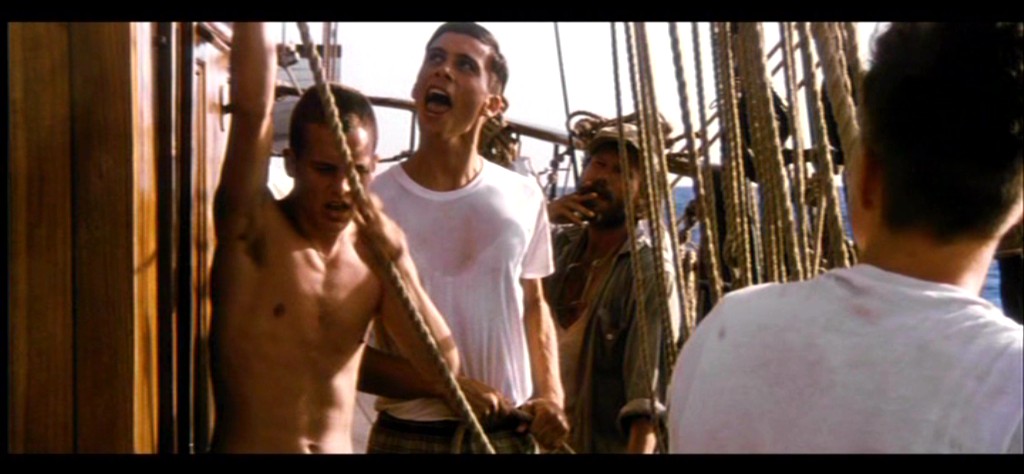
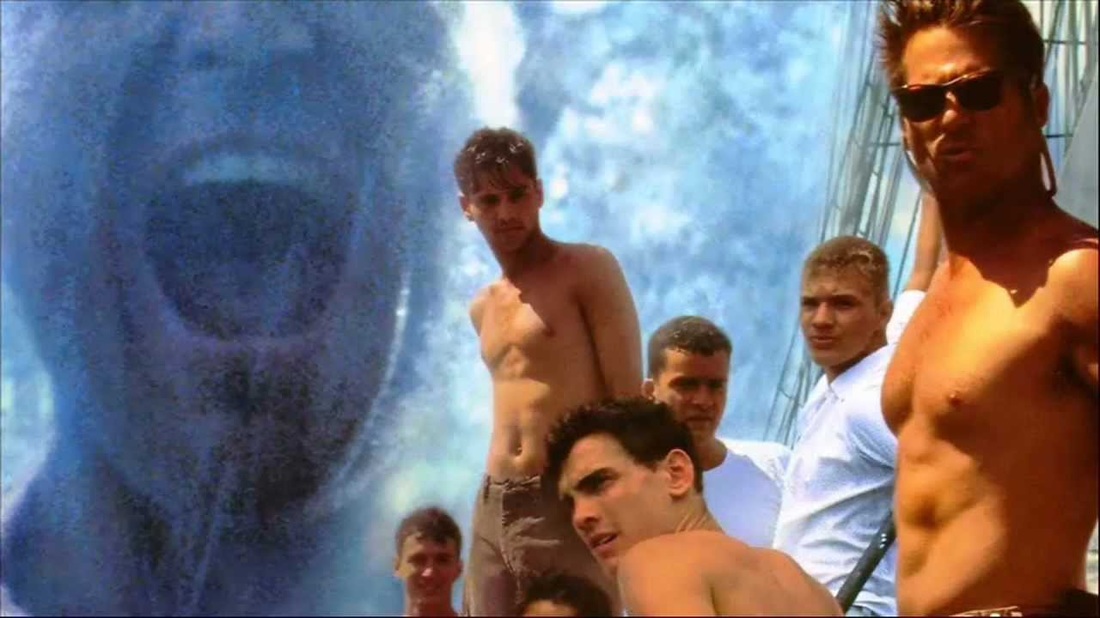
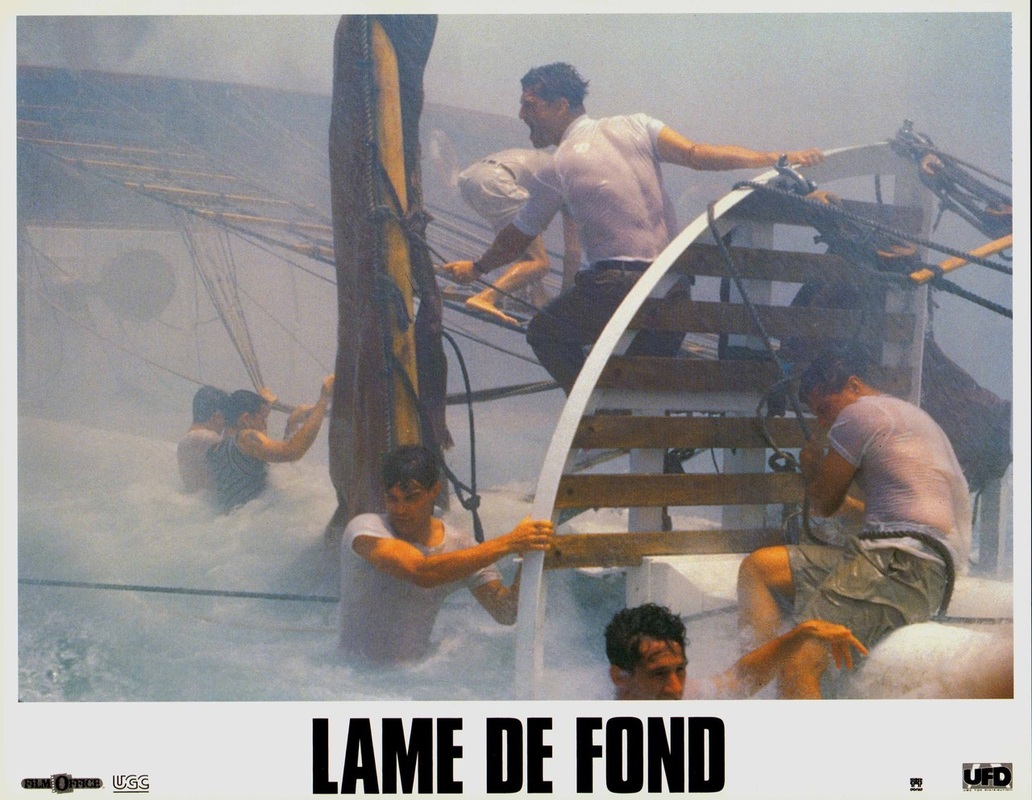
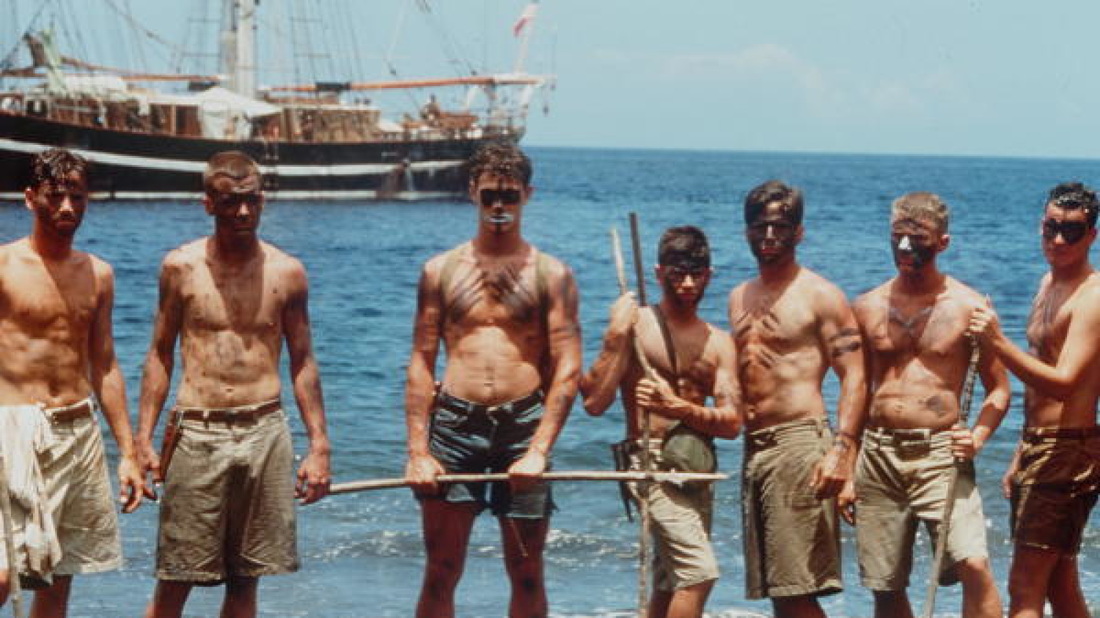
 RSS Feed
RSS Feed